Glycine Benefits: The Quiet Amino Acid for Gut Health, Detox, and Sleep
Some links below are affiliate links, which means I may earn a commission at no extra cost to you. I only recommend products and resources that I genuinely believe will help you on your personalized wellness journey.
A modern-day guide to one of your body’s most overlooked essentials.
Longevity is trending. Cold plunges. Red light panels. IV drips.
Biohacking is officially sexy—and while many of these tools have merit, it’s easy to miss some of the most basic nutrient needs in the pursuit of optimization.
Because beneath all the wearables and wellness tech, your body still depends on foundational building blocks to function.
And one of the most overlooked? Glycine—a conditionally essential amino acid that quietly supports detoxification, collagen production, blood sugar regulation, sleep, and nervous system balance.
Red light is cool. So is cold plunging.
But if you’re skipping sleep and skimping on glycine, you’re biohacking on a broken foundation.
So why is this little molecule on my radar?
In recent months, I’ve been reviewing organic acid test results from a wide range of clients—different ages, genders, and health histories. One pattern keeps surfacing:
Glycine is consistently low.
And it’s not just the clients struggling with chronic illness or nutrient-poor diets. I’m seeing glycine depletion even in people eating healthful diets, exercising regularly, and doing “everything right.”
Why? Because glycine isn’t something most of us intentionally get enough of—and yet our bodies are using it constantly, especially under stress, toxic burden, or inflammation.
In this post, we’ll explore:
What organic acid tests tell us about glycine
Why glycine is so crucial for cellular health and longevity
Signs and symptoms of glycine depletion
How much glycine we actually need (and why most of us don’t get it)
Food-first strategies to restore glycine naturally—plus bonus recipe links
Let’s bring this unassuming amino acid out of the shadows and into your daily rhythm—where it belongs.
What Organic Acid Tests Tell Us About Glycine
Organic acid tests (OATs) are urine-based functional lab tests that analyze metabolites—the biochemical "exhaust" of your body. They help evaluate how well you're making energy, managing toxins, supporting gut health, and utilizing vitamins and minerals.
When glycine-related markers show up abnormal on an OAT, it may reflect:
Increased detox demand
Low antioxidant capacity
Stress on the nervous system and methylation pathways
The good news? Glycine is one of the easiest nutrients to support through food.
What Glycine Does in the Body
Supports Detoxification
Glycine is essential for phase II liver detoxification—especially in breaking down benzoates, salicylates, and other toxins.
Builds Glutathione
As one of the three amino acids needed to make glutathione (your master antioxidant), glycine helps your body fight inflammation, oxidative stress, and toxicity.
Forms Collagen & Connective Tissue
Glycine makes up 1/3 of collagen. It’s crucial for skin elasticity, joint health, gut lining repair, and wound healing.
Calms the Nervous System
Glycine acts as an inhibitory neurotransmitter—helping with sleep, emotional regulation, and parasympathetic balance.
Balances Blood Sugar
Emerging studies show glycine improves insulin sensitivity and reduces post-meal glucose spikes.
Why Glycine Deficiency Is So Common Today
We Only Eat Muscle Meat
Ancestrally, we consumed skin, bones, and cartilage—modern diets don’t. Muscle meats are high in methionine but low in glycine, which can create imbalance.
We Don’t Make Broth Anymore
Slow-simmered stews and bone broths once formed the backbone of daily meals. Today, we reach for protein bars and boxed stock.
We’re More Toxic Than Ever
Environmental pollutants, medications, and food additives increase our glycine needs for detoxification.
Stress Depletes Glycine
Physical and emotional stress increases oxidative stress—and glycine is one of the first amino acids used to respond.
Common Signs & Symptoms of Low Glycine
Joint stiffness or pain
Poor sleep, vivid dreams, or waking often
Anxiety, restlessness, emotional reactivity
Dull or sagging skin, slow wound healing
Chemical sensitivities or trouble detoxifying
Inflammation, fatigue, or oxidative stress
Blood sugar crashes and carb cravings
Even a high-protein diet may not provide enough glycine—especially if it’s mostly muscle meat.
How Much Glycine Do You Actually Need?
While your body can technically produce glycine, that production often isn’t enough to meet today’s demands.
For general support: 3–5 grams/day
For therapeutic use (sleep, skin, detox): up to 10 grams/day
Modern intake from diet alone: often only 1–2 grams/day
Top Food Sources of Glycine (No Pills Required)
You don’t need a supplement to increase your glycine levels—just a gentle return to nutrient-dense, traditional foods. Glycine is especially abundant in collagen-rich parts of the animal like skin, bones, and connective tissue—foods that have largely disappeared from the modern plate.
Here are some of the most glycine-rich foods to bring back into your kitchen:
Bone Broth (Homemade):
One of the most concentrated natural sources of glycine—especially when made with long-simmered joints, skin, and bones. A single cup can contain between 1.5 to 3 grams of glycine depending on the bones used and how long it’s simmered. You want to start with grass-fed, pasture raised bones like the ones from Primal Pastures.Gelatin Powder:
A highly concentrated source that provides roughly 3 grams of glycine per tablespoon. It’s easy to stir into hot tea, mix into soups and borths, or use in homemade gummies and desserts. Here is one of our favorite grass-fed, pasture raised sources from Aspen Naturals.Collagen Peptides:
Just one scoop (about 10 grams) of collagen peptides delivers 2.5 to 3 grams of glycine. These dissolve completely in hot or cold liquids and have a neutral taste—great for coffee, smoothies, or baked goods.Chicken Skin:
Often discarded or avoided, chicken skin is naturally high in glycine due to its connective tissue content. About 3 ounces provides roughly 1.5 grams of glycine.Pork Skin / Cracklings:
A crispy snack that’s surprisingly rich in glycine, with around 1.2 grams per ounce. Choose clean, minimally processed versions without seed oils or additives. Try our favorite 4505 Sea Salt Seasoned Chicharrones—humanely raised (no antibiotics) and fried in rendered pork fat, not seed oils.Sardines (With Skin and Bones):
One small can provides about 1 gram of glycine along with calcium, selenium, and omega-3s. Don’t toss the skin or bones—they’re where the glycine lives. These lightly smoked Wild Planet Sardines in Extra Virgin Olive oil are wild caught and also pack a whopping 1800 mg of Omega-3 fatty acids and per 3oz. serving.Slow-Cooked Meat Cuts:
Cuts like oxtail, brisket, and short ribs naturally break down during long cooking and release collagen. A 3- to 4-ounce serving can contain around 1 gram of glycine, especially when the meat is cooked on the bone.
Heads up: Glycine is virtually absent in plant-based foods. If you’re vegan or vegetarian, you may need to be especially intentional about supporting collagen production through precursors and cofactor nutrients—or explore supplementation.
Glycine in Action: How to Get More Daily
Start with Broth
Bone broth like our Healing Bone Broth is a glycine-rich, gut-soothing, detoxification staple. Sip it on its own or use it as a base for soups and stews. Not enough time in your busy schedule to make bone broth? Try our favorite Kettle & Fire that maintains high standards like grass-fed, organic and Glyphosate Residue-Free. They simmer their broths for 20+ hours to provide maximum nutrient extraction.
Use Gelatin Creatively
Gelatin is easy to use and versatile. Here are 7 easy ways to incorporate gelatin into your routine.
Cook with collagen-rich cuts of meat
Instead of always reaching for boneless, skinless options, try incorporating cuts like oxtail, beef shanks, short ribs, or whole chicken with the skin and bones intact. These naturally contain more connective tissue—and when slow-cooked or braised, they release glycine-rich gelatin into the dish. Bonus: these cuts are often more flavorful and budget-friendly, too.
Final Thought: Glycine Is a Ritual, Not a Quick Fix
Glycine doesn’t shout. It doesn’t trend.
But it quietly holds your skin together.
It tucks you into sleep.
It neutralizes toxins and cools inflammation from the inside out.
Your ancestors didn’t call it “biohacking.”
They just called it soup.
Whether you stir it, sip it, or sneak it into dessert—let glycine be part of your everyday rhythm.
References:
Wu, G. (2009). Glycine: A novel anti-inflammatory, immunomodulatory, and cytoprotective agent. Amino Acids, 36(1), 1–10. https://doi.org/10.1007/s00726-008-0213-2
Meléndez-Hevia, E., et al. (2009). The importance of being balanced: Coordination of glycine and methionine metabolism. Journal of Biological Chemistry, 284(47), 31806–31809. https://doi.org/10.1074/jbc.M109.045419
Zhao, Z., et al. (2018). Dietary glycine prevents metabolic dysfunction and improves oxidative stress in high-fat-diet-induced obese mice. Journal of Nutritional Biochemistry, 55, 36–43. https://doi.org/10.1016/j.jnutbio.2017.12.004
Razak, M. A., et al. (2017). Multifunctional roles of glycine in metabolism, health, and disease. Frontiers in Molecular Biosciences, 4, 13. https://doi.org/10.3389/fmolb.2017.00013
Jackson, A. A. (1991). Maintenance of nitrogen homeostasis in man: The role of glycine. Clinical Nutrition, 10(4), 229–234. https://doi.org/10.1016/0261-5614(91)90089-N
Want to learn more about your glycine levels or genetic need?
Glycine On-the-Go: When Food Isn’t Quite Enough
Think you may need more glycine to support your body’s repair, detox, or methylation demands—but don’t have time to slow-simmer broth or prep nose-to-tail meals?
Collagen peptides are one of the easiest and most effective ways to bridge the gap. Just one scoop delivers over 2,100 mg of glycine, dissolves seamlessly into hot or cold drinks, and supports connective tissue, skin elasticity, and gut resilience.
Codeage Multi Collagen Peptides Powder is one of our favorite clean-sourced options—unflavored, lab-tested, and easy to add to coffee, smoothies, or even soups.
Small steps, big support. Your body (and methylation cycle) will thank you.
Get 10% off below.
Disclaimer:
This blog post is for educational and informational purposes only and is not intended to diagnose, treat, cure, or prevent any disease. The content is not a substitute for personalized medical advice, diagnosis, or treatment from a qualified healthcare provider. Always consult with your physician or a licensed healthcare professional before making any changes to your diet, supplement regimen, or health practices.



